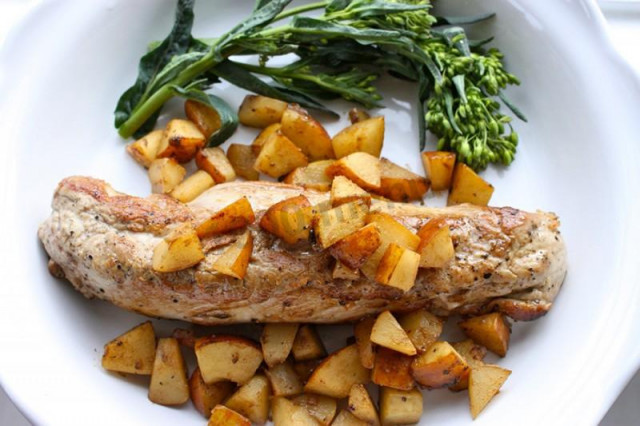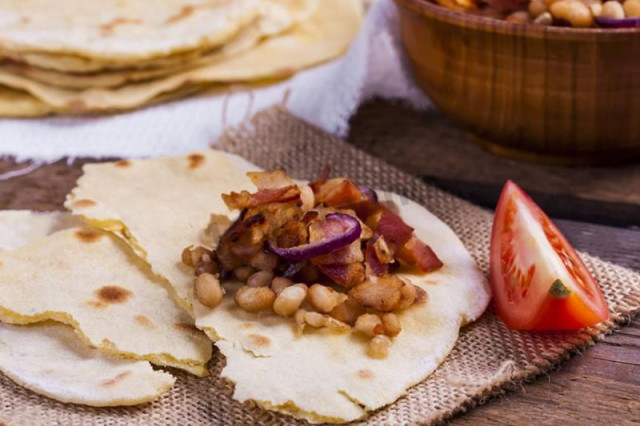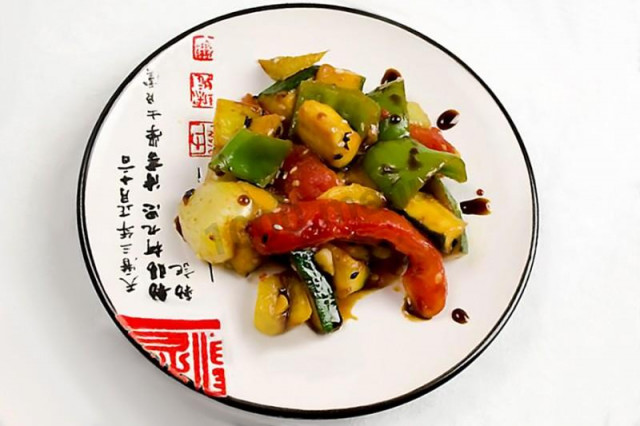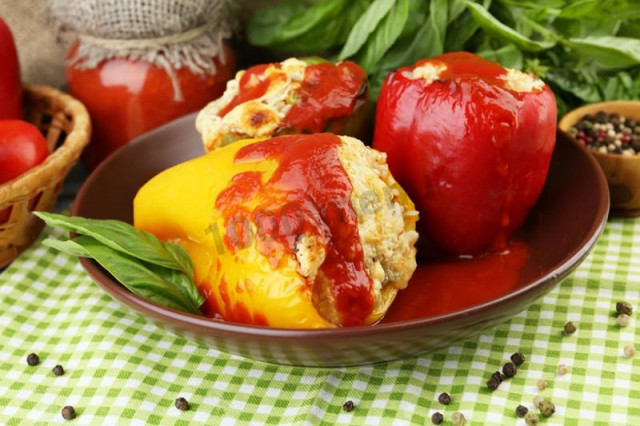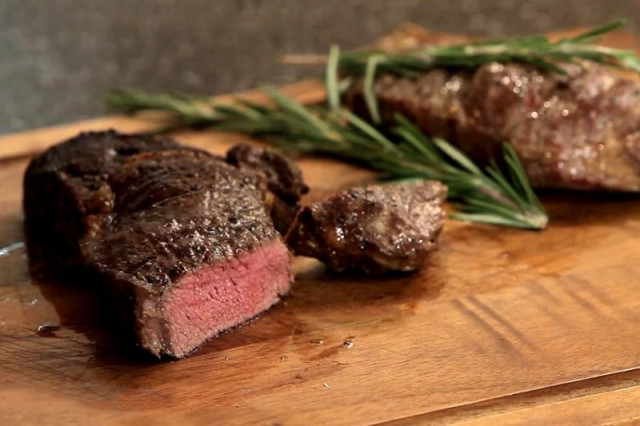Composition / ingredients
Cooking method
1. Preheat the oven to 200 degrees Celsius.
2. Peel the garlic, cut each clove in half lengthwise.
3. Meat should be washed and dried in advance. With a sharp knife, make rather deep incisions all over the meat, into which insert the halves of garlic cloves. Sprinkle the meat on all sides with salt and pepper.
4. Heat a frying pan with vegetable oil over medium heat, put the prepared meat there.
5. Fry the meat for 10 minutes, turning it on the other side every minute so that the pork does not burn.
6. Wash and blot the pears with a paper towel. Cut them in half, remove the stems and cores. After that, cut the pears into medium cubes.
7. Transfer the toasted meat to a foil-lined baking dish, pour over the white wine (3/4 cup). Put the mold in the oven for 10 minutes.
8. Put the frying pan where the meat was fried again on medium heat, pour the remaining wine. It will boil quickly, and you mix it with the remains on the bottom after frying the meat, mix them with the liquid.
9. As soon as the wine boils a little, put the pears in it, mix.
10. Pour in balsamic vinegar, add Dijon mustard. Simmer the pears for 4 minutes. The smell will be amazing!
11. Remove the pork from the oven, cover with foil and let it stand for 10 minutes. After that, remove the garlic from the meat.
12. Serve the meat to the table, cut into portions, put pieces of pears on top and pour sauce from the pan where they were stewed.
Caloric content of the products possible in the composition of the dish
- Pear - 42 kcal/100g
- Dried pear - 246 kcal/100g
- Canned pears - 76 kcal/100g
- Garlic - 143 kcal/100g
- White wine - 78 kcal/100g
- Vegetable oil - 873 kcal/100g
- Salt - 0 kcal/100g
- Pepper - 26 kcal/100g
- Balsamic vinegar - 88 kcal/100g
- Dijon mustard - 143 kcal/100g
- Pork tenderloin - 142 kcal/100g

